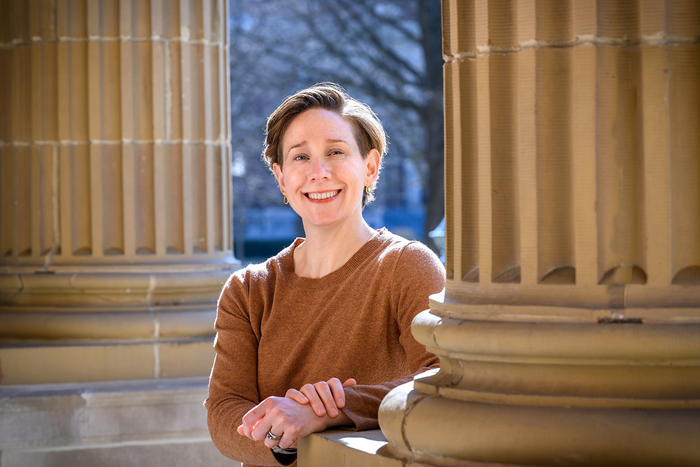CHAMPAIGN, Ill. — A new book from University of Illinois Urbana-Champaign anthropology professor Kathryn Clancy takes an unflinching look at the many ways humans have struggled – and often failed – to understand one of the greatest mysteries of human biology: menstruation.

Credit: Photo by Fred Zwicky
CHAMPAIGN, Ill. — A new book from University of Illinois Urbana-Champaign anthropology professor Kathryn Clancy takes an unflinching look at the many ways humans have struggled – and often failed – to understand one of the greatest mysteries of human biology: menstruation.
In “Period: The Real Story of Menstruation,” Clancy first focuses on the myriad ways human societies, their leaders, scientists and health practitioners have gotten it wrong – from myths and taboos about the purpose and health effects of menstruation to the quasi-scientific studies purporting to demonstrate that menstruating people give off toxic fumes that can harm children or other humans.
The myths, taboos, bad science and extensive shaming of people who menstruate do real harm to those individuals. These failures also allow scientists and practitioners to deny their patients the intellectual rigor, care and understanding reserved for the rest of society, Clancy writes. The myths also self-perpetuate in fields like anthropology.
“Many older ethnographies and historical works describe menstrual taboos as phenomena, universal across cultures, aimed at protecting the community from the evils of menstruation,” she reports.
For example, anthropologists write about Chhaupadi in Nepal, a practice of forcing menstruating people “to stay in crude structures for the duration of menses,” Clancy writes. Girls in these locales are sometimes bitten by snakes, suffer from exposure to the elements or from smoke inhalation. The practice may instill a sense of shame, of not belonging fully to the larger community.
But other societies welcome and celebrate the onset of menarche, honoring it as rite of passage with profound implications for the future health of the community.
“Among the Hupa of Northern California, for example, menstruating people gather in women’s houses, called min’ch, which are also spaces used during the postpartum period and after a miscarriage,” Clancy writes. “Min’ch translates to ‘a small, familiar, or dear house.’” These are not places of isolation but of community.
The heart of the book focuses on the evolving, maturing science of menstruation – with concrete examples from Clancy’s and other people’s work – and the kinds of questions that can now be asked and answered with newer technologies.
Wide variation in menstrual – and by extension, reproductive – experiences is a key theme. This variation reflects how the many processes of the uterus, including the way it repeatedly rebuilds and remodels its endometrium, allow it respond to internal and external factors including diet, exercise, stress, hormonal status, sexual activity and even the quality of a sexual partner’s sperm, Clancy writes.
This contradicts the “hero myth” around sexual procreation that casts the sperm as the active, determining factor in a successful pregnancy, and the woman’s body as a passive vessel awaiting her “prince,” she writes.
Readers will learn about aspects of reproduction rarely if ever covered in basic reproductive biology classes. These include descriptions of follicular waves that allow the body to select the most robust eggs for potential fertilization, cervical crypts that selectively sequester sperm, uterine waves that control the speed of the sperm and contractions of the cervix that discourage sperm or other invaders from going up the reproductive tract.
The book also outlines the evidence supporting the idea that repeated menstrual cycles actually prepare the uterus for a healthy pregnancy.
Clancy describes the book as a feminist plea for a new, more inclusive, more thorough and celebratory take on women’s reproductive capacities and processes.
Clancy is an affiliate of the Beckman Institute for Advanced Science and Technology, the Carl R. Woese Institute for Genomic Biology and the Center for Social and Behavioral Science at the U. of I.
Editor’s notes:
To reach Kathryn Clancy, email [email protected].
The book “Period: The Real Story of Menstruation” is available from Princeton University Press.
Reporters in the U.S. may request a review copy of the book by contacting Julia Haav at [email protected]. Reporters in Europe may contact Kate Farquhar-Thomson at [email protected].




